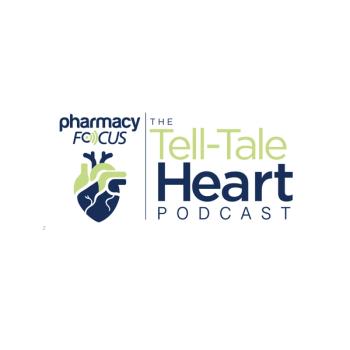
Asembia AXS25: Navigating the Transformative Landscape of GLP-1 Medications
Key Takeaways
- GLP-1 receptor agonists have expanded indications beyond diabetes and obesity, targeting comorbid conditions like cardiovascular and chronic kidney diseases.
- The market for GLP-1s is growing, with new manufacturers and formulations, including oral options, increasing competition and flexibility for payers.
As the landscape of glucagon-like peptide 1 receptor agonists (GLP-1) continues to evolve across health care, opportunities and challenges present themselves for patients, providers, and payers, according to Becky Davis, principal of Charles River Associates, at her session “GLP-1s: Riding the Wave of Innovative Medications” presented during Asembia’s AXS25 Summit. The annual meeting took place in Las Vegas, Nevada, from April 27 to May 1.1
“For the last few years, it kind of feels like regardless of what therapeutic area I might be trying to talk to payers about, when I ask them what their priorities are, they tell me GLP-1s,” Davis said to guests at the session. Public awareness of these drugs is only growing as their indications expand and capabilities grow. As demand increases and the industry deals with the lingering effects of shortages and compounding controversies, the future of payer management of these medications is “murky,” Davis said.1
Future of the GLP-1 Pipeline
Although GLP-1 medications have only recently exploded in popularity based on the new indications they have received and positive clinical trial results, these treatments have been around for decades and were first approved for type 2 diabetes in 2005 (exenatide; Byetta; Amylin Pharmaceuticals, Eli Lilly) and obesity (liraglutide; Victoza, Saxenda; Novo Nordisk) in 2014, Davis explained. Now, the pipeline has expanded to include indications for preventing cardiovascular disease and treating chronic kidney disease, with research continuing in even more diseases.1,2
“It’s really the tip of the iceberg on what might be coming,” Davis explained. She noted that indications for GLP-1s have clearly expanded beyond being solely for obesity and weight management and now encompass a litany of comorbid conditions such as chronic kidney disease, osteoarthritis, and substance abuse, among others. Davis noted that patients with obesity often present with multiple comorbid conditions; new generations of these medications are being developed with the ability to specifically target these comorbidities.1
“As these indications come into the market and expand, it’s going to be even rarer that we’re treating a patient for obesity only,” Davis explained. “We’re beginning to treat your overall ecosystem.”1
Beyond new indications for these GLP-1s, the formulation of the medications themselves is changing too, reflecting “just how dynamic this category is,” according to Davis. New manufacturers are jumping into the fray, ending the days of Novo Nordisk and Eli Lilly dominating the field with their GLP-1 products and providing more flexibility to payers when managing this class of medicines. Additionally, unique mechanisms of action, such as dual or triple agonists, are being developed to further enhance the efficacy of these drugs. Most importantly, oral GLP-1s are currently in development, which brings its own set of opportunities and challenges that payers will have to address in the future, Davis explained.1
“It will kind of be a race to see who gets into the market and what that means in terms of uptake,” Davis said. “There are a lot of different variables moving and broadening the market from the main products we see the utilization with today.”1
Market Growth Will Lead to Uncertainty
With pipeline expansion comes massive market growth for GLP-1s, with US sales of these products expected to double and reach $113 billion by 2030. Perhaps most striking is that spending on GLP-1 medications has eclipsed spending on specialty drugs, which is notable given the high price tag and complex treatments associated with specialty medications, Davis explained.1
Davis discussed how manufacturers are betting on the value of GLP-1s in controlling the total cost of care; as a patient uses a GLP-1 and experiences improvements in their condition, they will stand to save money from less health care utilization. However, at this point in the evolution of the medication class, “we’re not there yet,” Davis said. Additionally, regarding the future of the class, fear and uncertainty abound given the impending patent expirations for some of the products currently on the market and patient demand that does not look to be slowing anytime soon.1
Uncertainty also lies with how patient adherence to these drugs will fluctuate over time. “Most people don’t love to inject themselves,” Davis joked, acknowledging that the formulation of current-generation GLP-1s could become cumbersome to many. This could be solved by the previously mentioned development of oral medications, but Davis posed questions to the audience about what the proliferation of oral GLP-1s might mean for patient adherence.1,2
“When we do get these orals, are they filling an unmet need?” Davis asked, noting that an oral GLP-1 may require more stringent fasting requirements or cause more frequent discomfort or side effects with daily use. “Does that have a patient adherence impact? We don’t know yet, but it’s something to watch.”1
REFERENCES
1. Davis B. “GLP-1s: Riding the Wave of Innovative Medications.” Presented: Asembia’s AXS25 Summit. April 30, 2025. Las Vegas, Nevada.
2. Halpern L, Ryan D. Video: GLP-1 medications revolutionize obesity and diabetes care, with exciting advances on horizon. Pharmacy Times. Published February 7, 2025. Accessed May 7, 2025. https://www.pharmacytimes.com/view/video-glp-1-medications-revolutionize-obesity-and-diabetes-care-with-exciting-advances-on-horizon
Newsletter
Stay informed on drug updates, treatment guidelines, and pharmacy practice trends—subscribe to Pharmacy Times for weekly clinical insights.


















































































































































































































